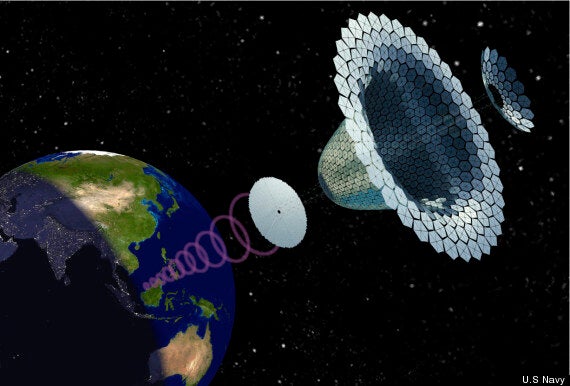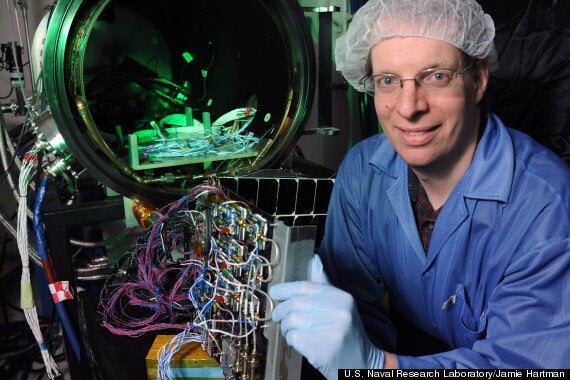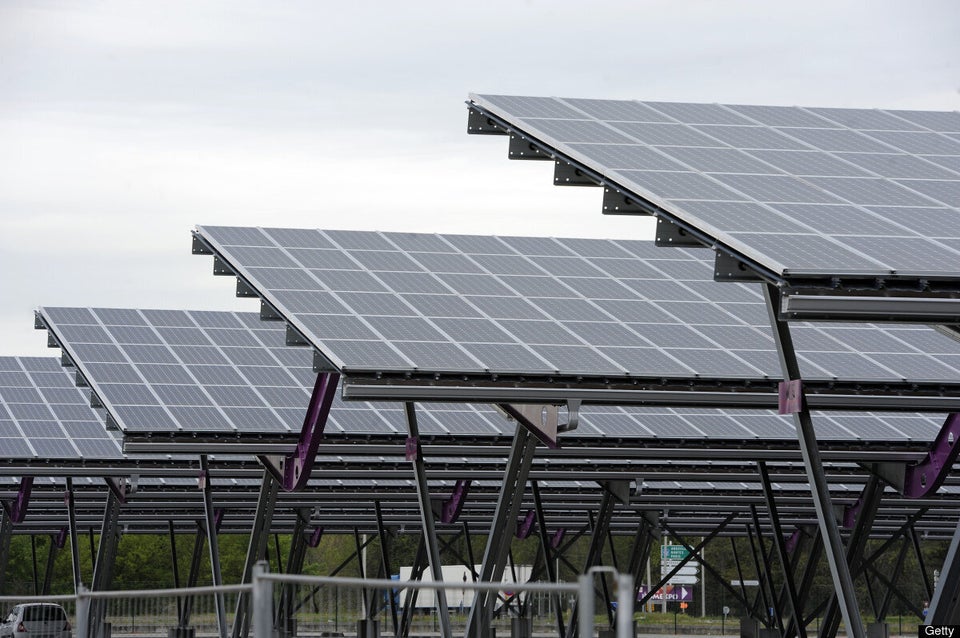Solar panel satellites, built in space by robots that beam power down to Earth - sound like science-fiction?
Well, even the team behind the idea admit it sounds "nuts" but that's not going to stop them trying.
US Navy scientists are developing the project which in theory could power entire cities - or military endeavours.

What the panels could look like
The solar panels will be made up of two types of "sandwich" module to form a one-kilometre wide satellite.
Each module consists of a photovoltaic panel on top to absorb the Sun's energy, an electronics system in the middle to covert it to a radio frequency and a bottom antenna layer to beam the power back to Earth.
Dr. Paul Jaffe, a spacecraft engineer at the U.S. Naval Research Laboratory (NRL), said: "`It's hard to tell if it's nuts until you've actually tried."
"People might not associate radio waves with carrying energy, because they think of them for communications, like radio, TV, or cell phones.

The modules
" They don’t think about them as carrying usable amounts of power."
The implications of successfully developing the technology are profound. Obviously it could solve many of our energy needs in an efficient and green manner.
But it could also enable a giant lumbering war machine - like the US Navy - to conduct global operations without the constraint of transporting and refuelling traditional fuels.
When you consider the Pentagon is the world's largest consumer of energy (excluding countries) this will be of particular interest to US military planners.

Dr. Paul Jaffe
The technology is promising and has even spawned new ways of testing materials for space conditions.
Jaffe said: "One of our key, unprecedented contributions has been testing under space-like conditions."
Using a specialized vacuum chamber at another facility would have been too expensive, so Jaffe built one himself.
He said: "It's cobbled together from borrowed pieces."
The vacuum chamber is just big enough for one module. In it, Jaffe can expose the module to the simulated extreme cold of space and concentrated solar intensities (mimicked by turning on two powerful xenon lamps in the same spectrum as the sun).
By hooking the module up to a tangle of red and blue wires, he measures how well it radiates heat.
Jaffe says most solar panels orbiting with today's satellites are never tested in space-like conditions because the technology is already mature: "But if you wanted to test anything under concentrated sunlight you would need something like the simulator we've put together here."
Through trial and error, Jaffe has learned a lot. "The capability we've built up with the testing and vacuum under sun concentration is something that's pretty unusual.
"And we've actually gotten a couple inquiries from people who may want to use this."
